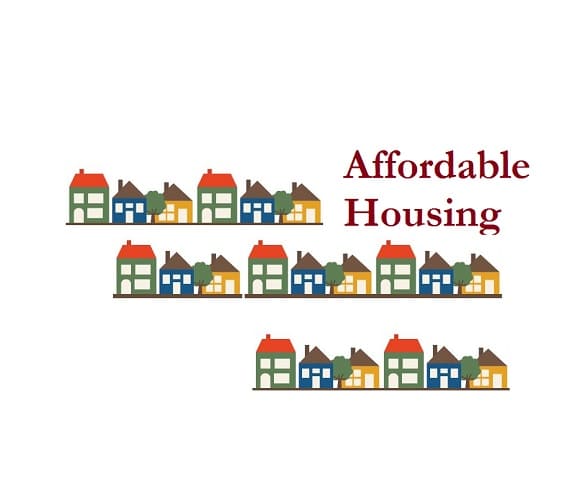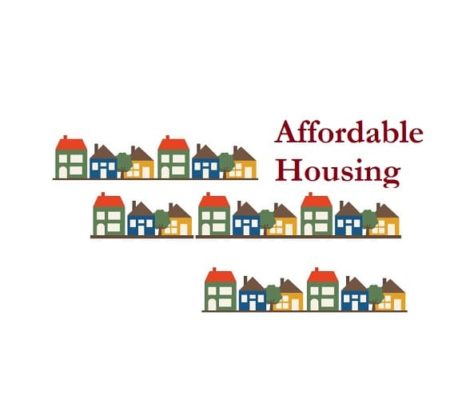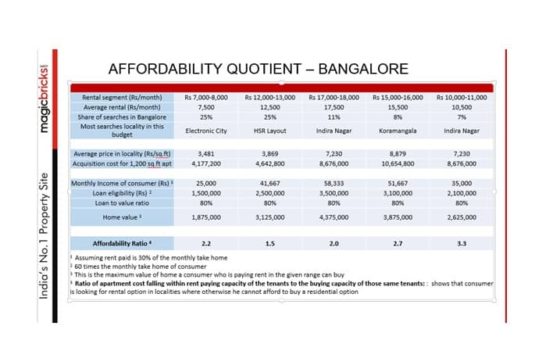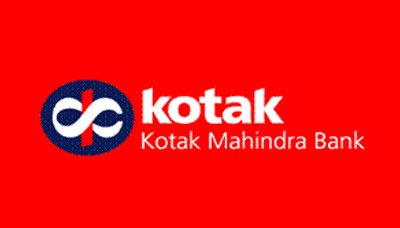

India, 21 March 2017/Jayashree Kurup – Magicbricks Bureau//– Are affordable homes the way forward for the real estate sector? Minister of Housing & Urban Poverty Alleviation, Shri M Venkaiah Naidu certainly feels so. He has urged the real estate developers to take up affordable housing projects in a big way. Magicbricks in association with KPMG has just concluded a report where Indian housing has been proved to be one of the most affordable globally, barring select cities like Mumbai and Delhi. In this, affordable is likely to be the dominant piece for a long time.
There are many reasons why Affordable Housing will remain the focus area for the next few years. Demand analysis shows that maximum demand is at the base of the pyramid, in the economically weaker sections. However, this remains in the purview of social housing. Most of the migrants to the city in this category come to the city and work in informal jobs. But they do not aspire to buy homes. As a result this needs to remain in the social sector with strong government support. The thrust should also be towards rental housing. The government of India is working on a Rental Housing Policy where rent subsidies of Rs 2,000-15,000 to the urban poor is being actively considered. As of now the policy is only in the nascent stage. Stats below for reference:

However, the government has squarely put the thrust of affordable housing construction on the private sector by acceding to the demands of the industry and giving it infrastructure status. By bringing the middle classes into this nomenclature, Affordable Housing now becomes attractive from the private sector point of view as well.
The thrust has been defined. Some states like Haryana have actually come up with a plan to achieve the numbers. The identified budget ranges are between Rs 12-24 lakh for Haryana. The private sector gets almost instantaneous approvals, lowering the interest costs during the wait period. The applications are streamlined and the distribution of the units is by allotment/draw with government authorities sitting in on the process.
The completion of the project was to be within 4-5 years. Applicants should not have another home in their name and cannot sell the unit for a year after allotment. This five-year lock-in period is primarily to prevent speculation. Price escalation cannot take place, with prices capped at Rs 4,000/sq ft. The NHB (National Housing Bank) Credit Linked Subsidy Scheme offer is applicable to applicants with a salary level of less than Rs 50,000 per month, getting a 6.5% subsidy on the loan amount of Rs 6 lakh. Additional loans beyond Rs 6 lakh, if any, will be at non-subsidized rate.
This segment does not need the benefits of the Real Estate Regulation Act (RERA) as it already comes protected under the Pradhan Mantri Awas Yojana (PMAY) guidelines. However, if there is any deviation, the consumer may be able to seek recourse with the regulator.
Middle income housing comes with its own subsidy schemes. The scheme will be implemented initially in 2017 for a period of one year w.e.f 01.01.2017. MIG I has been defined in the notification as households having an annual income between Rs 6,00,001 (Rupees Six Lakh One) up to Rs 12,00,000 (Rupees Twelve Lakh). MIG II households are defined as households having an annual income between Rs 12,00,001 (Rupees Twelve Lakh One) up to Rs 18,00,000 (Rupees Eighteen Lakh).
|
Definitions for the purpose of the scheme: |
A beneficiary family will comprise of husband, wife, unmarried sons and/or unmarried daughters. An adult earning member (irrespective of marital status) can be treated as a separate household; provided that he/she does not own a pucca (an all-weather dwelling unit) house in his/her name in any part of India.
Provided also that in the case of a married couple, either of the spouses or both together in joint ownership will be eligible for a single house, subject to income eligibility of the household under the Scheme.
|
| Carpet Area |
Area enclosed within the walls, actual area to lay the carpet. This area does not include the thickness of the inner walls.
|
With the consumer friendly RERA to be notified by the states from May 1, 2017, this category of housing is likely to get more active. Consumers are clearly waiting for this safety cover to kick in as searches on Magicbricks reveal that consumer search activity has begun but the buying process is still patchy.
In an exclusive interview to Magicbricks, Minister Naidu said that the hallmark of a robust democracy is when there is “Enlightened Consumer opinion.” The Minister said at a recent conference that “The Government’s focus on ensuring Housing for All, including the Middle Income Groups, offered immense opportunities both at the bottom and the middle of the pyramid which needs to be seized by the developers who have seen ups and downs in recent years”.
Mr Naidu further said that the Government has paid more attention to real estate than any other sector by announcing more than 20 supporting measures to revive the real estate sector over the last two years. This included announcing the long awaited infrastructure status for Affordable Housing besides several tax concessions and exemptions.
One of the biggest enabling factors in Affordable Housing is making finance available to developers, bankers and the consumer. “Low-cost long-term financing under infrastructure status, tax concessions, central assistance under PMAY and the scale of housing needs of these sections make affordable housing the best investment opportunity and developers are left with no further excuses for not seizing this opportunity,” Mr Naidu stressed. He further said that under the Prime Minister’s Awas Yojana (Urban), people belonging to Economically Weaker Sections, Low Income Groups and Middle Income Groups with incomes up to Rs 18 lakh per year have been made eligible for central assistance up to Rs 2.35 lakh per beneficiary.
To iron out the problems faced by the developers and industry, the Ministry of Housing & Urban Poverty Alleviation (HUPA) has called for a round table with the industry later this month. The issue to be considered is where the money for the sector will come from. Industry associations such as Credai, suggests funds or bonds as a means to raise the money from domestic and foreign sources. This may then be deployed as low cost funds to the sector.
Ministry of HUPA has so far approved construction of over 16 lakh affordable houses for urban poor with an investment of about Rs 90,000 crore and central assistance of about Rs 25,000 crore. Private sector participation will only come once these clarifications and enablers are spelt out.
With demonetisation, cash transactions driving real estate purchase has significantly reduced, subventions have put more money in the wallet of the consumer to buy, Housing for All has ensured quick approvals and Central and State support low cost schemes. All these will not translate into consumer purchases once the Regulator’s umbrella of safety kicks in.
Case studies from other markets/countries:
Vietnam
- In Vietnam there is an affordable rent housing policy to resolve the severe shortage of housing for low-income earners. However, the numbers are small and the demand very high. There is not enough interest from the private sectors as there are limited incentives
- Land is the biggest problem. The country is expected to need one million apartments for low income earners with the current supply of 10,000 units per year
- There is discussion around switching from the ownership thrust to affordable rental housing and self-built housing sector
Indonesia
- In Indonesia, the government has not regulated the rental housing market
- The government builds rental apartments for students, workers and slum rehabilitation
- Rental payment systems vary between early or monthly
- Many people of urban communities with low income levels live in rental housing called Kontrakan – a very small house but located in the centre of the town
- There are no regulations governing this rental activity, so the lease agreement occurs informally. In the event of a dispute, there is no law governing this matter
- Government support the rental housing multi-storeys low income rental house called RUSNAWA, on land provided by local government with buildings provided by central government and monthly rentals of 10-26 USD
Malaysia
- In Malaysia, in the 1950s and 1960s the housing trust was created for rental housing managed by local governments
- By the 1980s they switched to home ownership
- Most evolved rental housing is in Hong Kong
Hong Kong
- In 2013, 30% of Hong Kong residents lived in PRH (Public Rental Housing)
- The Hong Kong housing authority (HKHA) has 96% of rental housing
- Developed land is allotted free to HKHA to build these PRH units
- These are built as high rise blocks of 30 to 40 storeys with 12-28 flats per floor
- This high density living (1000 flats per hectare) maximises the use of land and economises the building cost
- Initially HKHA had to borrow from the government development loan fund, however, it is today a cash rich organisation
- Surplus generated from subsidized sale of flats and non-domestic premises is also able to cover the deficits of the public rental housing’s operating accounts
- These are 20-40 sq metres, for 3-4% households
- Monthly rental charge was HK$2000 in 2013 – 1/3rd of its market rent or 80% of the operational cost for each unit
- These are allotted to low income households which are unable to afford private sector rent
- PRH waiting list income limits are derived using a household expenditure approach which consists of housing cost, non-housing cost and a contingency provision
- Housing cost is the cost of a private flat comparable to PRH. Non-housing cost is based on the housing expenditure survey conducted by census and statistics department adjusted to consumer price index (excluding housing cost or change in minimum wages). There is 5% contingency provision rounded to the nearest 10
- Better tenants are required to pay 1.5 times of normal rent or double rent under housing subsidy policy. Those living in PRH for 10 years or more are required to declare their income every other year to determine their eligibility of housing subsidy
- PRH tenants get priority in the purchase of subsided flats under the home ownership scheme
- Tenants whose income exceeds the set limit can stay for a short tenure in tenancy housing paying double the market rent. After 12 months they have to vacate and then the flats are re-allocated to the needy
- There is a rent assistant scheme and zero rent payment supported by the social welfare department
- Households and temporary financial hardship can pay reduced rent – half or 3 quarters – under the rent assistant scheme
- Those eligible for comprehensive social security assistance need not pay rent from their pocket
- Rent is not set in relation to cost and rent increase is capped at 10% in reference to change in income indices
- Every two years a rent review is conducted by HKHA and PRH is adjusted upward and downward according to income index
- All PRH tenants have to sign the tenancy agreements. Those violating the norms can have the tenancy terminated if the negative points exceed 16
- Tenants participate in Estate Management Advisory Committees (EMAC) and advice HKHA on awards and renewal of service contracts and estate management
- Small funds are allocated to EMAC for local minor improvement works
About Jayashree Kurup
Jayashree Kurup is Head, Content and Research, at Magicbricks.com. Jayashree has been a business journalist for over two decades with The Times of India, The Economic Times and The Financial Express. She writes extensively on real estate and infrastructure, city management, information technology, human resources and management. She joined Magicbricks in 2006 and set up the content and research department for the brand. She has spearheaded many research initiatives such as PropIndex-India’s Apartment Index, Housing Sentiment Index in association with IIM-Bangalore and the Value Analysis Report. Jayashree is involved with a number of global research initiatives and specializes in analysing research data to provide usable solutions to users. She also works with businesses in using industry dialogues such as Real Estate Dialogues (RED) and Broker’s Connect with senior management in her domains of expertise to generate content solutions that keep audience and industry engaged. She forayed into research in 2002 as Head, Asia Pacific Research, Real Estate, with Insignia Brooke, a global property consultancy, headquartered in New York, where she analysed the real estate markets of India, China, Thailand, Philippines and Japan. In 2014, Jayashree won the Best Journalist Award of the Construction Industry Development Council (CIDC) Vishwakarma Awards. She is a regular guest columnist in a number of established media including The Times Group and others. She is an Executive Member of the CII Real Estate Committee as well as a Jury member for the Construction Industry Development Council (CIDC) Vishwakarma Awards. She holds a postgraduate diploma in journalism from the Times School of Journalism and is a postgraduate in English Literature from the Miranda House, Delhi University. Jayashree is a natural impressionist painter who enjoys walking nature trails and popular Hindi and English music from the ’60s.
Affordable Housing – the New Infrastructure in India





